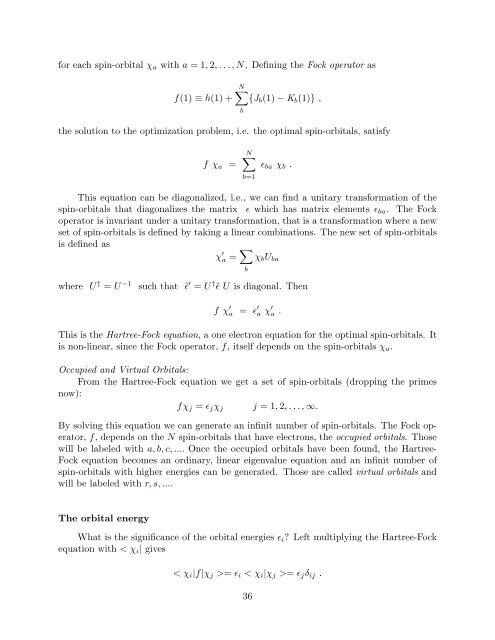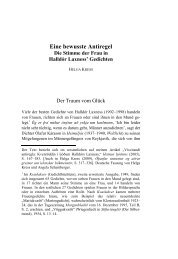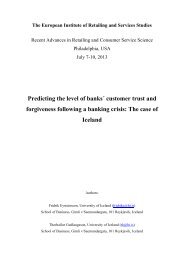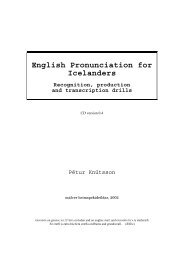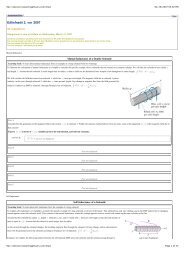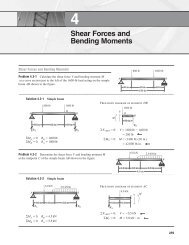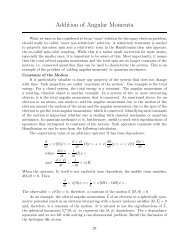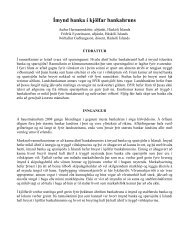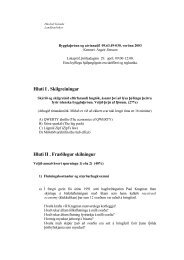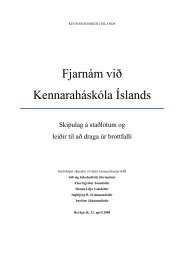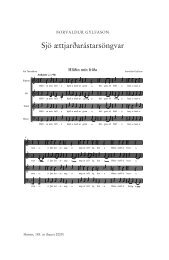The Hartree-Fock approximation underlies the most commonly used ...
The Hartree-Fock approximation underlies the most commonly used ...
The Hartree-Fock approximation underlies the most commonly used ...
Create successful ePaper yourself
Turn your PDF publications into a flip-book with our unique Google optimized e-Paper software.
for each spin-orbital χa with a = 1, 2, . . ., N. Defining <strong>the</strong> <strong>Fock</strong> operator as<br />
f(1) ≡ h(1) +<br />
N<br />
{Jb(1) − Kb(1)} ,<br />
<strong>the</strong> solution to <strong>the</strong> optimization problem, i.e. <strong>the</strong> optimal spin-orbitals, satisfy<br />
f χa =<br />
b<br />
N<br />
b=1<br />
ǫba χb .<br />
This equation can be diagonalized, i.e., we can find a unitary transformation of <strong>the</strong><br />
spin-orbitals that diagonalizes <strong>the</strong> matrix ǫ which has matrix elements ǫba. <strong>The</strong> <strong>Fock</strong><br />
operator is invariant under a unitary transformation, that is a transformation where a new<br />
set of spin-orbitals is defined by taking a linear combinations. <strong>The</strong> new set of spin-orbitals<br />
is defined as<br />
χ ′ a = <br />
b<br />
χbUba<br />
where U † = U −1 such that ˜ǫ ′ = U † ˜ǫ U is diagonal. <strong>The</strong>n<br />
f χ ′ a = ǫ ′ a χ ′ a .<br />
This is <strong>the</strong> <strong>Hartree</strong>-<strong>Fock</strong> equation, a one electron equation for <strong>the</strong> optimal spin-orbitals. It<br />
is non-linear, since <strong>the</strong> <strong>Fock</strong> operator, f, itself depends on <strong>the</strong> spin-orbitals χa.<br />
Occupied and Virtual Orbitals:<br />
From <strong>the</strong> <strong>Hartree</strong>-<strong>Fock</strong> equation we get a set of spin-orbitals (dropping <strong>the</strong> primes<br />
now):<br />
fχj = ǫjχj j = 1, 2, . . ., ∞.<br />
By solving this equation we can generate an infinit number of spin-orbitals. <strong>The</strong> <strong>Fock</strong> operator,<br />
f, depends on <strong>the</strong> N spin-orbitals that have electrons, <strong>the</strong> occupied orbitals. Those<br />
will be labeled with a, b, c, .... Once <strong>the</strong> occupied orbitals have been found, <strong>the</strong> <strong>Hartree</strong>-<br />
<strong>Fock</strong> equation becomes an ordinary, linear eigenvalue equation and an infinit number of<br />
spin-orbitals with higher energies can be generated. Those are called virtual orbitals and<br />
will be labeled with r, s, ....<br />
<strong>The</strong> orbital energy<br />
What is <strong>the</strong> significance of <strong>the</strong> orbital energies ǫi? Left multiplying <strong>the</strong> <strong>Hartree</strong>-<strong>Fock</strong><br />
equation with < χi| gives<br />
< χi|f|χj >= ǫi < χi|χj >= ǫjδij .<br />
36


